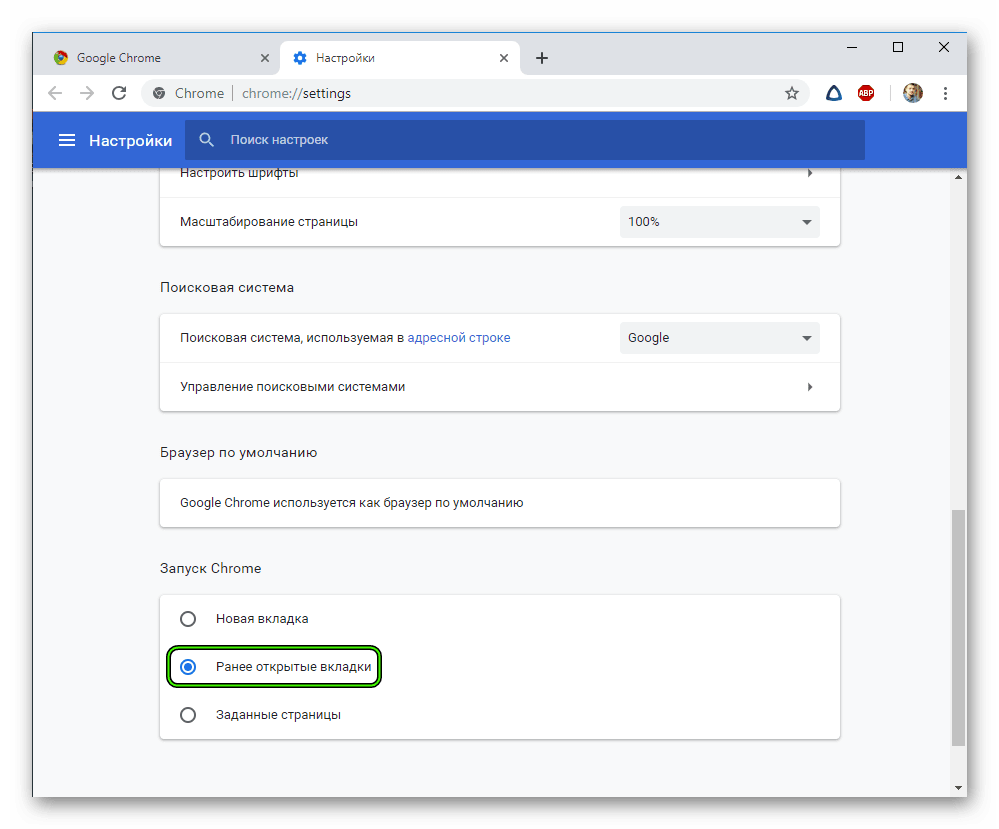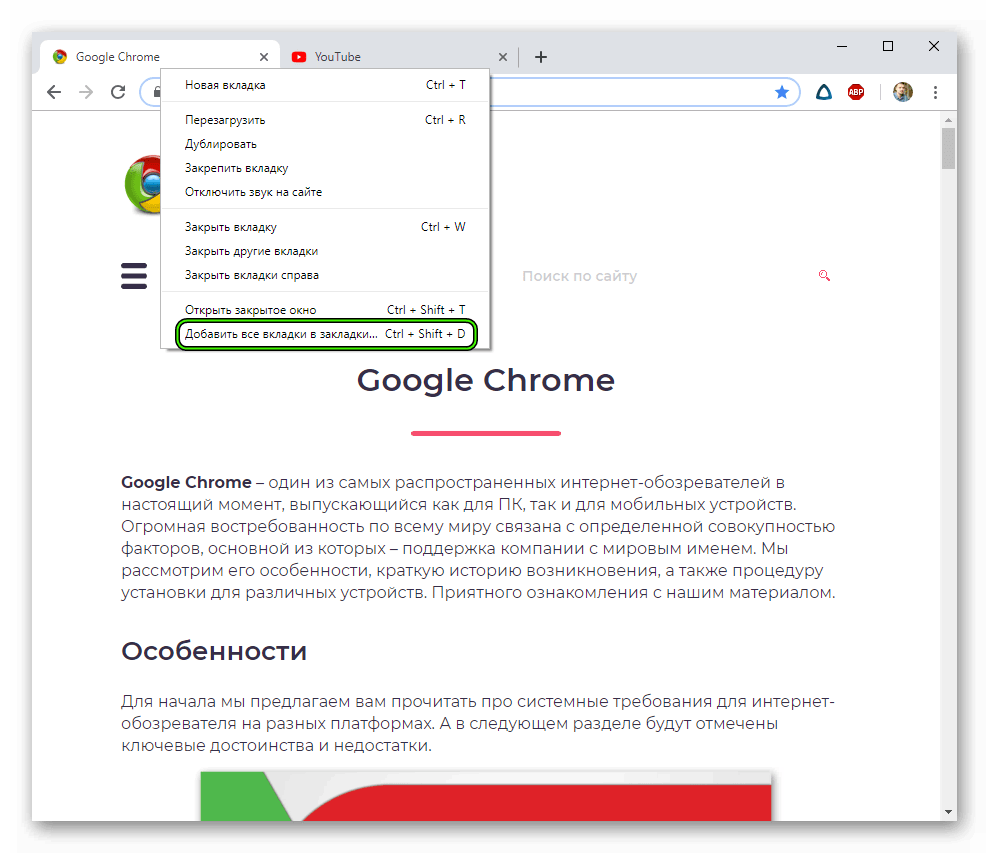Google Chrome allows you to save tabs in different ways and in different ways. This helps to save time and find all the necessary information as quickly as possible. Thanks to bookmarks, access to your favorite sites will take no more than a second.
By default, all tabs disappear when you close your browser. But if you select the "Previously opened tabs" option in the Chrome startup settings, then when you start them again, they will open automatically. You can also save your favorite bookmarks separately. Let's consider: how to do all this and where to click.
Can I save tabs in Google Chrome
There are three main ways to save tabs:
- through the settings of the Google Chrome browser;
- using the bookmarks panel;
- using special extensions.
The first two methods will take no more than a couple of minutes. Saving multiple tabs with extensions requires a little more time and effort, but this method and the possibilities are much wider – for example, it will be easier to transfer bookmarks after reinstalling the browser or the entire system.
Through browser settings
How to use Chrome settings to save the necessary tabs:
- First, you need to open all the tabs that you plan to save.
- then in the upper right corner of Google Chrome find an image with three vertically arranged points, click on it;
- in the drop-down menu select "Settings";
- find the item "Launch Chrome" – here make a mark next to the item "Previously opened tabs".

Now all the necessary tabs will open automatically every time you start the browser.
An alternative way to save tabs is by pinning them to the panel:
Right-click on the desired tab and select "Pin" from the drop-down menu.
This option is useful when you need to save sample pages, each of them is fixed on the panel manually.
Through the bookmarks bar
The bookmarks bar is located under the Chrome search bar – this is where frequently used pages will be pinned.
To begin with, you need to configure the correct display of the panel itself – go to the search engine menu, select "Settings". Here go to the "Appearance" section and check the box next to "Always show bookmarks bar".
Now that the panel is docked, you can add frequently used pages to it.
Stages of adding:
- Go to the page, right-click on the bookmarks panel – a list opens, from which you need to select "Add page".
- Next, write the name, select the folder "Bookmarks Panel" and click "Save" – done, now the tab is fixed to the panel.
Bookmarks saved by this method can be opened one at a time, or all at once. To launch one tab, you just need to click on it. To open all tabs – right-click on the free space of the panel and select "Open all bookmarks" from the displayed list – and all saved pages will open at the same time.
Visual bookmarks
Installing visual bookmarks helps make the use of frequently visited resources as convenient as possible.
Outwardly, such a bookmark looks like a thumbnail with the name and logo of the site, and functionally it is a hyperlink.
Clicking on such a thumbnail, you get to the desired web page. You can set any pages on the panel, divide them into groups. Each time you launch, Google will open a panel with saved visual bookmarks.
Using extensions
One way to save bookmarks is to use the One Tab extension. To install the application, you just need to find it in the Chrome Web Store, download and install it – after that, the extension logo will be fixed near the search bar on the right.
Click on the application icon – this opens a single tab "One Tab" in the browser. All other web resources previously used will be shown in a list format – and all the necessary pages will be saved.
The next time you launch Google Chrome, you'll again see a single "One Tab" tab with a list of saved sites. If you want to open each link in a new tab, click "Restore All".
To add new resources to the list of the extension – right-click on its logo, located to the right of the search bar.
This brings up a list where you should add new pages – the next time you start the browser, they will be displayed in the extension.
Using the extension to save tabs is the most energy-efficient option – this mode of operation makes it possible to improve the performance of the browser. You can only work with 1-2 tabs that are needed at the moment, while all the others will be quickly available. You do not need to keep dozens of open tabs – this has a positive effect on the speed of work, the browser will not slow down and hang.
You may also be interested in instructions on how to block access to a site in Google Chrome.
Instruction
To save an open page (or several), it will take no more than 10 minutes, and the bulk of this time will be spent on finding the right sites. The instruction itself is extremely simple – you just need to consistently perform all the steps.
Add a single site
To bookmark a single site:
- Start the browser;
- Find the site that you want to save;
- On the right edge of the address bar, find an icon in the form of an asterisk, hover over it and click the left mouse button.
- We see the window that opens and specify in it the name of the bookmark, as well as its location.
- Click "Done".

This asset has now been added to the bookmarks in the panel.
Add all open pages
Saving multiple bookmarks is even easier:
- Launch the browser
- Open all the necessary, frequently used pages;
- Hover the mouse cursor over the free space of the panel next to the open tabs, click the right button.
- In the drop-down menu we find the line "Add all…" and click on it – done, all open bookmarks are saved.

You can add pages to both existing folders and new folders. If there are more than 15 frequently used pages, we strongly recommend that you use folders for thematic division of resources. Otherwise, searching through your own saved bookmarks will take too much time.







